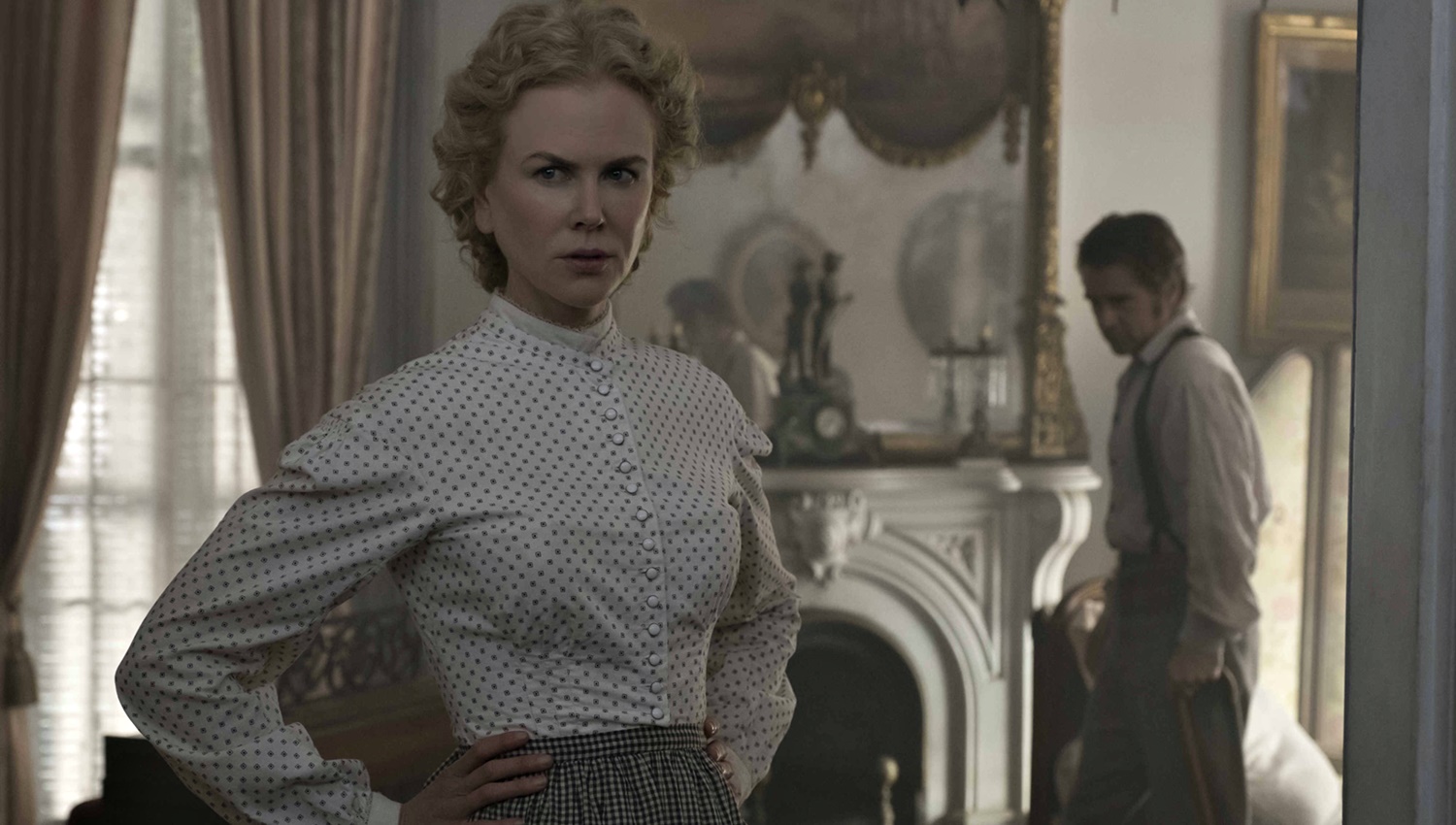
The Beguiled
Dustin Chase
Best director winner at Cannes film festival 2017, Sofia Coppola insists her version of The Beguiled is not a remake of the 1971 Clint Eastwood film; rather an alternative adaptation to Thomas Cullinan’s novel. The Beguiled might be Coppola’s most accessible film to date, that’s not saying much following films The Bling Ring, Marie Antoinette and her divisive Oscar nominated Lost in Translation. Daughter of legendary Francis Ford Coppola, Sofia continues making films that alienate and dissuade modern to mainstream audiences from enjoying her work that’s simultaneously curious and visually compelling. The Beguiled comes from a different tone than her previous, more noir, gothic styling, but still very “Sofia Coppola” in structure.
Union soldier and immigrant John McBurney (Farrell) is thankful for the aid provided to him by the women at Farnsworth Seminary school. The corporal abandoned his infantry after a leg wound, which Martha (Kidman), the owner and lady of the house reluctantly stitches. “You are a most unwelcomed visitor,” she clarifies. The rest of the females vary in age range from French instructor Edwina (Dunst), to the teenage troublemaker Alicia (Fanning) and younger. “We can teach him some real southern hospitality,” Alicia says with some uncomfortable undertones. When John begins to heal, all the woman deprived of affection due to the war, prance around the house in their finest clothes and jewelry, pining for his attention. When his feelings lean toward one in particular, the mood of the house takes a very dark turn.
The Beguiled, like My Cousin Rachel, suffers from too much subtly, the less is more approach muzzles opportunities in both films about strong female women.
“The soldier being here is having an effect on the entire house,” the understatement of the film. The time, the place and the characters are relatively well portrayed to give the audience understanding of how removed these women must have felt during the war. Oscar nominated cinematographer Philippe Le Sourd (The Grandmaster) draws the audience into the era with hefty amounts of fog, Spanish moss trees and eerie paths of light that shine on the Farnsworth property. There are a good number of cutaways, but many of the shots are virtually the same and repeat again and again. We rarely see the characters out of the house, so it’s easy to recognize duplicate shots like the spyglass from the balcony or front-scape shots of filtered sunlight.
The film is so short (not that it feels that way) but the character development suffers. We come in and out of these characters lives without knowing very much about them. Kidman is ideally cast here as the leader, torn between duty and urges. Dunst, Coppola’s most frequent collaborator, is good and perhaps the most developed character. There is a wonderfully funny segment where everyone gets to discuss their admiration for apple pie as sexual tension, visual teasing extends to the entire film. The Beguiled, like My Cousin Rachel, suffers from too much subtly, the less is more approach muzzles opportunities in both films about strong female women. The film ends on a somewhat predictable note, leaving nothing for the audience to chew on afterwards, producing its greatest downfall.
Final Thought
Despite being her most accessible film, Coppola misses many opportunities to elevate this film to masterpiece territory, a hit, or even something to talk about following the credits.
